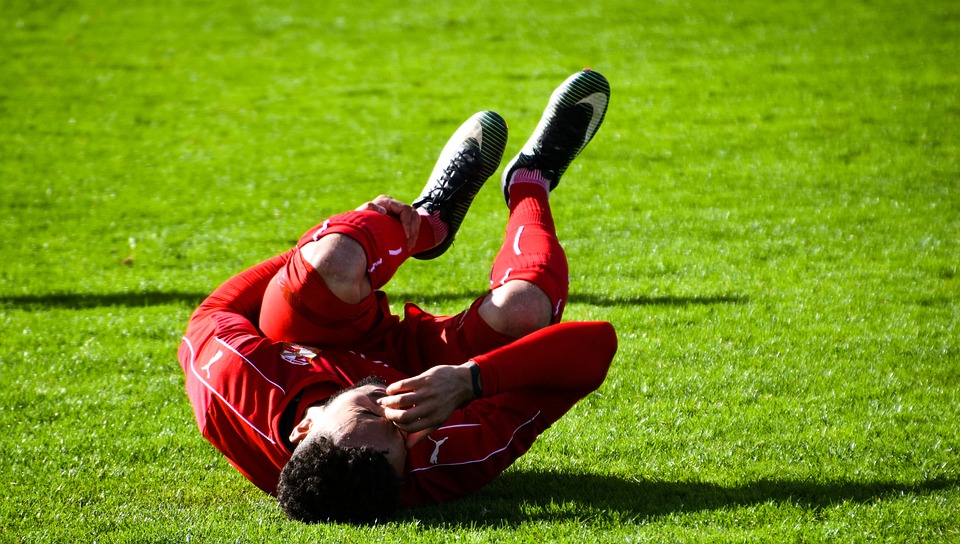Strains and Sprains – Treating The Most Common Type Of Sports Injury
Strains and sprains are common types of sports injuries that affect the muscles and the ligaments of the body, and they typically occur as a result of a fall or other type of impact such as a collision.
Strain or Sprain – What Is The Difference?
A strain is a torn or pulled muscle, and it occurs when muscle or tendons (the bands that connect the muscles to bones), are stretched too far and pulled away from the bone. Strains are heavily associated with overuse injuries but can also be the result of a fall or twist.
A sprain is when a ligament attached to a joint is stretched. Ligaments are tough bands of fibrous tissue that connect joints together (bone to bone).

Where Do Strains and Sprains Most Commonly Occur?
Strains can occur anywhere in the body but are frequently reported in the hamstrings and the lower back.
Sprains are associated with the joints of the body, in particular the ankles, knees and wrists.
How Do I Know If I Have A Strain Or Sprain?
A sports injury or other type of injury involving a strain, or a sprain can cause significant pain, tenderness and weakness in the affected area and a loss of motion. Following a sprain, muscle spasms and cramping may be experienced, and this is where the muscles involuntary tighten causing further pain.
A sprain will not allow for any type of weight-bearing activity, which can make it difficult to walk if the knee or ankle has been damaged. The affected limb will typically be swollen with some sort of visible bruising or redness.
How Is A Fracture Different?
A bone fracture will cause intense pain and additional symptoms. Signs of a fracture may include the following:
- Severe swelling, bruising and sometimes bleeding depending on the type of fracture
- Numbness and tingling
- Inability to move the affected area
- Inability to put weight on the affected area
- Discoloured skin at the site of injury
- Protrusion of the affected area at an unusual angle – the injured area is visibly different
- Broken skin with protruding bone
In the case of a suspected fracture, it is important to seek immediate medical attention.
Causes
Any type of excessive strain or impact to the joints can potentially result in a strain or a sprain. Other factors that can increase the risk of injury include the following:
- Not warming up properly before exercising
- Increasing exercise intensity too rapidly and not preparing the body with a gradual increase
- Poor exercise technique
- Incorrect technique for lifting weights
- A collision during a sporting activity or other type of direct blow
- A fall or stumble where the joint or body part is stretched/forced beyond its natural range of motion
Treatment
The initial treatment for any type of strain or sprain is RICE:
Rest – resting from the activity that caused the injury and not exerting it any further with more physical activity.
Ice – apply cold packs to the injury several times a day, without applying directly to the skin.
Compression – an elastic compression bandage can help to stabilise or support the joint.
Elevation – the injured joint should be ideally elevated higher than the heart while resting.
During the first 72 hours following the injury, it is important to avoid any type of additional strain to the affected area. Other things to avoid include massage therapy, or any type of intense heat such as a sauna, steam room, hot bath, or heat pack.
Recovery Time
Most strains and sprains will improve over a couple of weeks, however, in cases of persistent inflammation and pain, it may take longer and require rehabilitative physiotherapy.
Pain Relief Medication
Over the counter medication such as paracetamol or anti-inflammatory medication such as ibuprofen can help to reduce painful symptoms and inflammation.
Physiotherapy
Following a strain or sprain a physiotherapist can help to restore the injured joint and reduce scar tissue formation. The treatment generally includes specific exercises and stretches to increase strength, stability, and coordination and ultimately to restore any movement lost in the joint in the case of a sprain.
Our Services
Our team of physiotherapists offer a wide range of services including rehabilitation for sports-related injuries such as strains and sprains and other soft tissue and overuse disorders. For more information on our services and treatment options, get in touch today.
